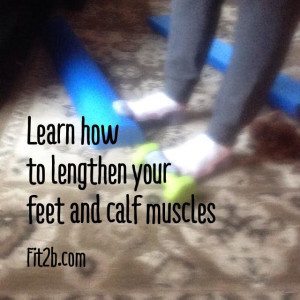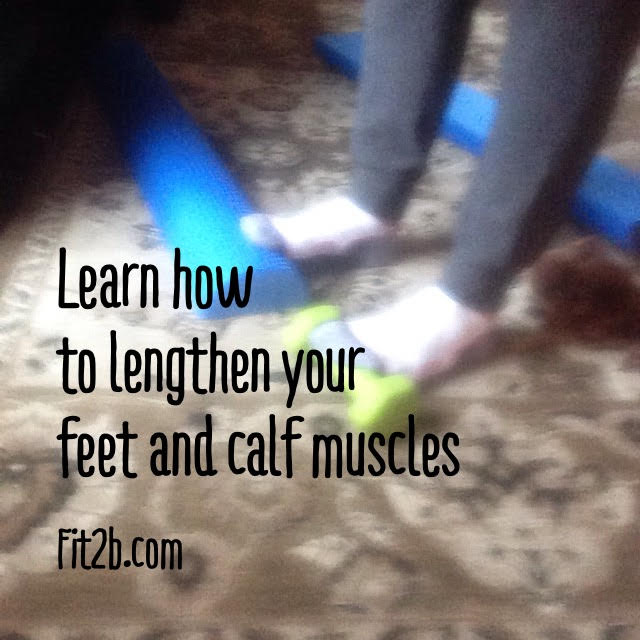Blog
Are Heeled Shoes the Answer to Tight Calves?
Question about heeled shoes posted in our forum: “Beth is it possible for someone to have “short tendons”? My mom was told she needed to wear shoes with a heel because she has short Achilles’ tendons. Are their specific stretches to lengthen them?” -Lauren F.
That question was posted in our private member forum, and it makes me happy and sad. Happy that she posted so we could help her mom find real help and not just keep supporting herself in a shortened position. Sad, that her mom was told she should keep doing the very thing that leads to shortness and tightness in the calves and feet.
My answer went like this…
Truth: Most of us have short tendons these days from wearing heeled shoes and/or sitting with feet tucked and/or all the things.
Lie: We must hold our shortness in short positions to maintain comfort and prevent injury.
Truth: If she began doing gentle calf and foot stretches every day and wearing progressively less heeled shoes, then over the next two years she would likely see a gradual increase in her tendon length {semantics trolls stay away} an increase in flexibility and a decrease in her need to wear heeled shoes which are just perpetuating the problem. Get her Katy Bowmans foot book for Christmas and take her shoe shopping [for something slightly lower than where she’s at now].
Yes, more could be said about heeled shoes
Indeed much has been written on how to not only reduce foot pain, which – for the record – is what heeled shoes might do [adding padding and lifts to make the feet temporarily happy] by holding the feet where they’re comfortable which is not necessarily the same as holding them where they can improve and thus get rid of the problem for good.

Basic biomechanics dictates that “form follows function.” If you want lengthier, more flexibile muscles, you need to put them in longer positions and work on their flexibility. If you need a deflated muscle to recover from being stretched out (i.e. The fascia of the abdominal wall when it has diastasis recti) then you do motions and offer support that helps that area reapproximate or come back together and stay there.
We don’t want Barbie doll feet. We don’t want your heel bone to be close together with your knee bone. We want everyone to be able to easily lift their toes higher than their heels when standing and squatting, because this bodes well for preventing falls and improves balance, coordination, hamstring length, pelvic floor health, and core stability.
Yes, it’s all connected. What happens in Vegas might stay in Vegas, but your feet don’t know that rule. What happens in your feet, doesn’t stay in your feet. It travels up the kinetic chain of muscles and movement.
Let me be clear: I have some heeled shoes. Heeled shoes aren’t evil, but they’re not your best friend either. Go ahead and wear them {very very} occasionally, but not all the time. Whatever you do the most wins.
Let bare feet, minimalist shoes and long happy calf muscles win.
We have lots of workouts here on Fit2B that include lovely stretches for the feet and legs in them because – again – foot integrity affects core integrity. If you’re hobbling around on sore feet, the rest of your body has to compensate for that. Some of our best routines that will bless your feet include:
- Kelly’s Total Body Stretching – members only
- Squat Prep – open to non-members
- Foam Rolling – members only
- Simply Stretching II – members only
- Step Aerobics – members only
- Ankles & Upper Body – members only
In the very near future, I’m going to be filming a “Foot Routine” that is just for the feet. Won’t that be glorious? When it’s done, I will be sure to link it here and perhaps open it to non-members for a while.
Meanwhile, try this: Thread your fingers between your toes for a good stretch. A natural time to do this is when you’re washing your feet in the bath or shower.
Please! Leave a comment with your favorite foot stretch or any questions you have, and I’ll answer as quick as I can. If I don’t know the answer, I will refer you to someone who does.


I have a shortened metatarsal and a rotated talus bone in my left foot. I was given orthotics to adjust for these abnormalities, and have had terrible pain ever since. The dr. installed a post on the orthotics that helped the shin splints and hip pain go away, but the plantar fasciitis in both feet persists. It is especially bad in my right foot. I’ve been icing and taking breaks; I’ve ordered the book by Katy Bowman, and I will check out the workouts noted above, but is there more I can do (or shouldn’t do) with this physiology? The chronic pain is getting to me, and affects my desire to move, which worries me! Thanks for your help!
Hi Lisa,
I’m curious to hear back from after you’ve done the workouts and applied the info in that book. So many of my clients have been helped tremendously in just a few weeks with these things, and I’m excited you’re going to try them. Please comment with any feedback after you’ve tried them, and at that point, based on your feedback, I can advise further.